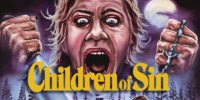Traditionally, clowns were associated with the circus and entertainment for children. However, the clown has gained a more sinister reputation in recent years. The killer or evil clown has become a trope enthusiastically embraced by horror writers and filmmakers and beyond—from Batman’s nemesis, the Joker, to Pennywise and Captain Spaulding. In real life, serial killer John Wayne Gacy was known to entertain children as a clown.
Every facet of a clown’s appearance exaggerates human appearance—from the large red nose and a huge smile to the gigantic shoes. This exaggeration can inspire either laughter or fear. Psychologists point out that the extreme make-up, which distorts and disguises the clown’s features, is what creates discomfort as we wonder who is under the make-up.
Clown History
Clown-like entertainers pop up in history going back thousands of years in cultures all over the world from China and Egypt to ancient Greece and North America.
In a 2013 Smithsonian article, “The History and Psychology of Clowns Being Scary,” Linda Rodriguez McRobbie writes that pygmy clowns entertained Egyptian pharaohs in 2500 BCE; YuSze entertained Emperor Qin Shih Huangin in ancient imperial China; clown-like entertainers provided comic relief for Hopi Native Americans during spiritual ceremonies, and a clown-like entertainer called “stupidus” made audiences laugh in ancient Rome.
Benjamin Radford in his book, Bad Clowns, writes that the word “clown,” which wasn’t used until the 16th century, is of Low German origin and means a “countryman or peasant.” [1]
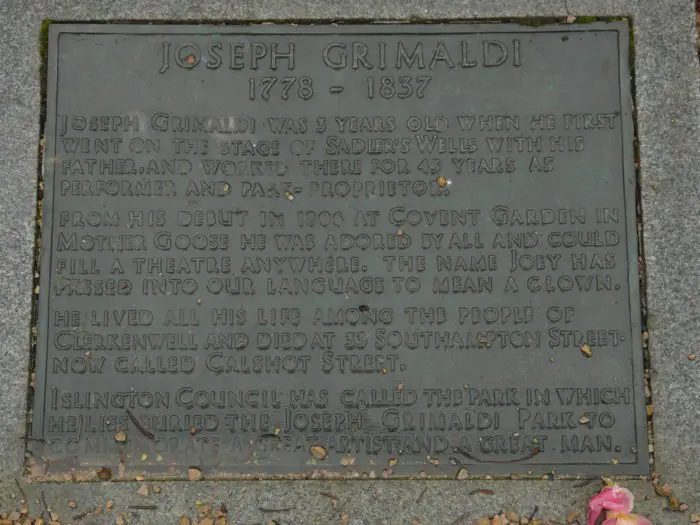
Famous & Troubled Clowns
Modern clowns can be traced back to Joseph Grimaldi, who rose to fame as a pantomime player on the Regency London stage.
Grimaldi is credited with creating the look we associate with clowns. Before Grimaldi, clowns wore little makeup. He added white face paint, colorful costumes, and a blue mohawk. McRobbie describes Grimaldi as a “master of physical comedy” who also made fun of the fashions of the day, did impressions, and performed bawdy, risque songs. To this day, a church in east London has honored Grimaldi with an annual Sunday service since 1959 with many members of the congregation dressed up in clown costumes. Grimaldi’s personal life was the opposite of his stage persona. Grimaldi is quoted as saying “I am GRIM ALL DAY, but I make you laugh at night.”
Raised by a tyrannical “stage father,” Grimaldi reportedly suffered from bouts of depression. His first wife died giving birth to their son. As an adult, Grimaldi’s son became a clown and died due to the effects of alcoholism at age 31. Grimaldi’s act was very physical which led him to deteriorate physically, suffering chronic pain, and eventually disability. Grimaldi is also described as an alcoholic who died in poverty in 1837.
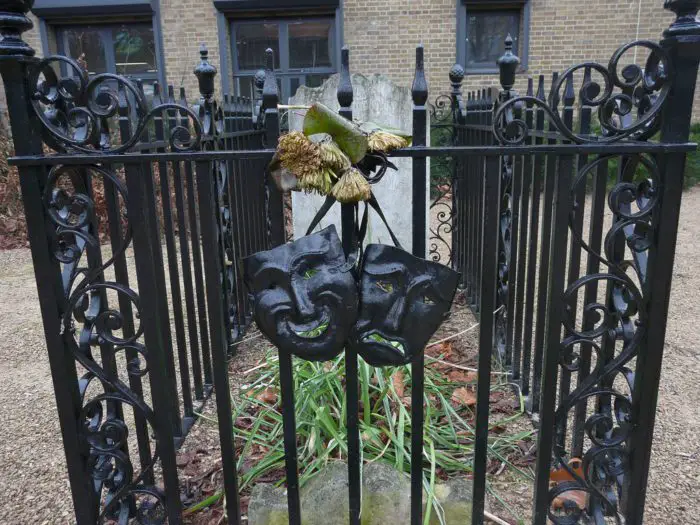
Around the same time as Grimaldi, Jean-Gaspard Deburau was entertaining European audiences as Pierrot. Like Grimaldi, Deburau’s make-up included white face paint, red lips, and black eyebrows.
Deburau was just as well known in Paris as Grimaldi was in London. He was charged with the murder of a young boy in Paris in 1836. Deburau hit the boy with his walking stick after the boy yelled insults at him. Deburau was acquitted.
The Dickensian Influence
After Grimaldi’s death, Charles Dickens, author of the holiday classic A Christmas Carol, among many other works, edited Grimaldi’s memoirs under the name “Boz.,” published in 1838. Dickens’ The Pickwick Papers, published in 1836, included an alcoholic clown allegedly inspired by either Grimaldi or Grimaldi’s son.
Andrew McConnell Stott, Dean of Undergraduate Education and an English professor at the University of Buffalo, SUNY, credits Dickens for introducing the idea of the scary clown. Scott wrote a biography on Grimaldi, The Pantomime Life of Joseph Grimaldi, published in 2009. Dickens’ version of Grimaldi’s memoirs was very popular. Both books may be credited with putting the image of the sad, tragic clown into the minds of readers.
A 2016 Time magazine article, “The Surprising History Behind the Scary Clown Phenomenon” quotes Stott: “’This [character] is the blueprint,” says Stott, for the clown’s reputation as ‘something sinister, which is absolutely what [today’s] scary clown thing is all about.’ It’s ‘a model,’ he adds, for the idea of clowns in disguise who are ‘covering up for something.'”

The Circus Comes to Town
Clowns eventually became associated with the circus. The origins of the circus are traced back to equestrian Philip Astley and his exhibitions from the 1760s. The shows were popular and eventually attracted a variety of performers including acrobats, jugglers, and clowns.
McRobbie quotes French literary critic Edmond de Goncourt, writing in 1876, “[T]he clown’s art is now rather terrifying and full of anxiety and apprehension, their suicidal feats, their monstrous gesticulations and frenzied mimicry reminding one of the courtyard of a lunatic asylum.”
Another sinister clown was introduced in the 1892 Italian opera Pagliacci (Clowns). The main character is a clown who kills his unfaithful wife during a performance.
The British circus was eventually exported to America. During the late 19th century, American circuses evolved into the now well-known three-ring format. The sad clowns remained the “hobo” clown became popular, who was always sad-faced and disheveled, unshaven with ragged clothes. McRobbie points out that Emmett Kelly’s hobo clown persona, “Weary Willie,” was created during the 1930s—the decade of The Great Depression.
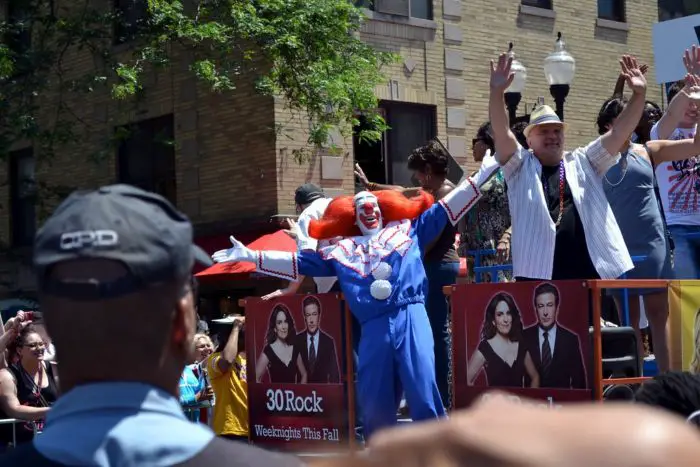
Clown on TV & Movies
Clowns gained popularity during the early days of television with Clarabell who started as a sidekick on the Howdy Doody Show. The most famous clown was Bozo. A 2021 Washington Post article, “The strangely enduring appeal of Bozo the Clown,” traces Bozo’s origins back to 1948 and a line of read-along records marketed to parents as a way to occupy their children. With the rising popularity of television, Capitol Records, the company that produced the read-along records, decided to produce a TV show, Bozo’s Circus, in 1951. Bozo’s popularity grew and many actors played him on local TV channels mainly in the Midwestern United States plus on Brazilian and Mexican TV.
After Bozo came Ronald McDonald, the 1960s Batman TV series featured the Joker, and Krusty the Clown on The Simpsons.
Filmmakers produced more sinister versions of killer clowns in the many incarnations of Batman’s Joker, Pennywise in It, and Captain Spaulding in Rob Zombie’s Firefly trilogy. Of course, we can’t forget the 1988 cult film, Killer Klowns from Outer Space.
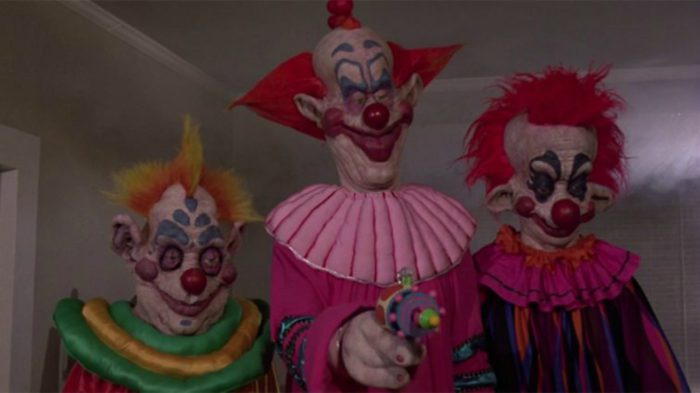
While the clown’s darker reputation isn’t new, the clown gradually became associated more with lighthearted slapstick comedy and children’s entertainment. The clown as a children’s entertainer seems to peak during the 1950s with Bozo the Clown. From Bozo’s read-along records to the Joker’s and Captain Spaulding’s homicidal tendencies, the image of the clown has once again become darker.
One explanation for the rise in popularity of the creepy or killer clowns on TV and in movies could be that people are more informed these days and perhaps not as naive or trusting. Numerous true-crime docuseries are one example of how contemporary media shed light on the darker side of human nature.
Maybe the clown’s appearance creates unease as we wonder who is beneath the mask-like layers of make-up. Clown make-up is the perfect disguise for a criminal. However, others have a more deep-seated fear of clowns.
In a 2019 Psychology Today article, “Why are Clowns So Scary?”, psychologist Mark D. Griffiths, Ph.D., quotes an article by psychology Professor Frank McAndrew for The Conversation:
“[Dr. Nader] believes that clown phobias are fueled by the fact that clowns wear makeup and disguises that hide their true identities and feelings. This is perfectly consistent with my hypothesis that it is the inherent ambiguity surrounding clowns that make them creepy. They seem to be happy, but are they? And they’re mischievous, which puts people constantly on guard. People interacting with a clown during one of his routines never know if they are about to get a pie in the face or be the victim of some other humiliating prank. The highly unusual physical characteristics of the clown (the wig, the big red nose, the makeup, the odd clothing) only magnify the uncertainty of what the clown might do next.”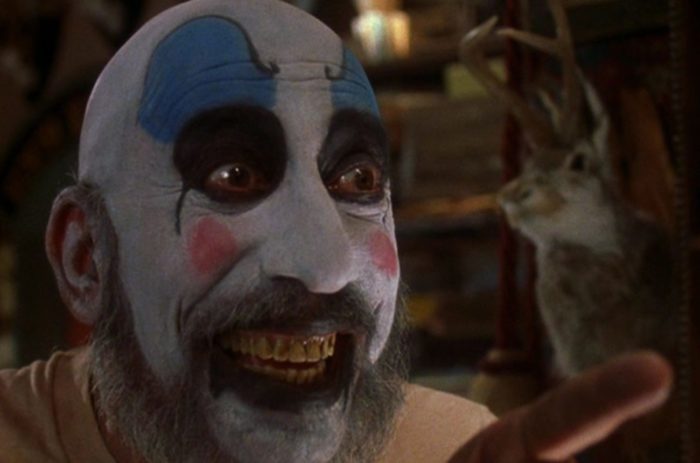
Coulrophobia
There’s a clinical term for fear of clowns—coulrophobia. Phobias are defined as irrational fears of specific objects, or in this case, people. There is a term for clown phobia; however, coulrophobia isn’t listed in the American Psychiatric Association’s handbook. A 2021 article for PsychCentral, “All About Coulrophobia (Fear of Clowns),” points out it can be classified as a specific phobia that falls in the class of anxiety disorders.
Someone with coulrophobia has a negative reaction to clowns in photos and videos, and of course, in-person interactions with clowns. While some children and adults will of course look away or just avoid interacting with a clown at an event, those with coulrophobia may exhibit more extreme reactions.
A 2019 Healthline article, “Understanding Coulrophobia: A Fear of Clowns,” lists the following symptoms of phobia:
- nausea
- panic
- anxiety
- sweating or sweaty palms
- shaking
- dry mouth
- feelings of dread
- difficulty breathing
- increased heartbeat
- intense emotions such as screaming, crying, or becoming angry at the sight of the object of fear, a clown for example.
Furthermore, Very Well Health describes the following symptoms of coulrophobia:
- Avoidance of situations that has a clown
- The phobia lasts longer than six months
- Your quality of life is greatly impacted
- Intense anxiety when seeing the image of or thinking of a clown
- In general, phobias are attributed to traumatic childhood experiences but can also be learned from a parent or guardian.
Many sources point mainly to childhood trauma as a source of a phobia but a phobia can also be learned.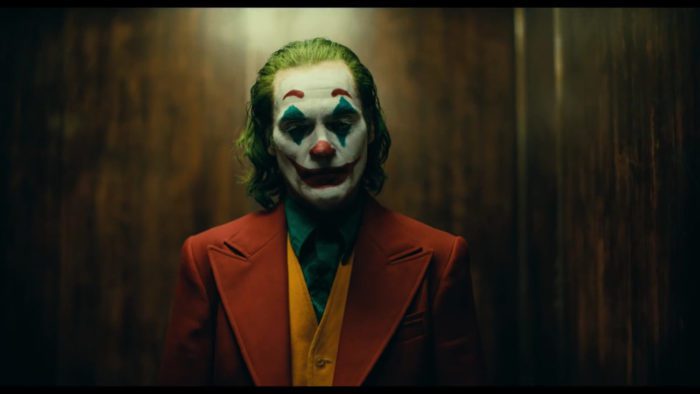
According to Healthline: “Having an experience that involves a clown where you were paralyzed with terror or were unable to escape the situation could be classified as a traumatic experience. Your brain and body would be wired from that point on to flee any situation involving clowns. While this isn’t always the case, your phobia may be tied to traumas in your life, and it’s important to discuss this as a possible cause with a trusted therapist or family member.”
While uncommon, a learned phobia comes from a child witnessing fear in a parent or authority figure. Healthline points out: “We learn rules about the world from our parents and other adults, so seeing your mom or older sibling terrified of clowns may have taught you that clowns are a thing to fear.”
Possible treatments for coulrophobia would include exposure therapy which would include having the person look at photos of clowns or simulating an in-person interaction with a clown.
Another approach is cognitive-behavioral therapy which is based on how we think about the world around us. Someone with coulrophobia would be encouraged to change or shift their negative beliefs or thoughts and perceptions about clowns to eventually change their thinking about them.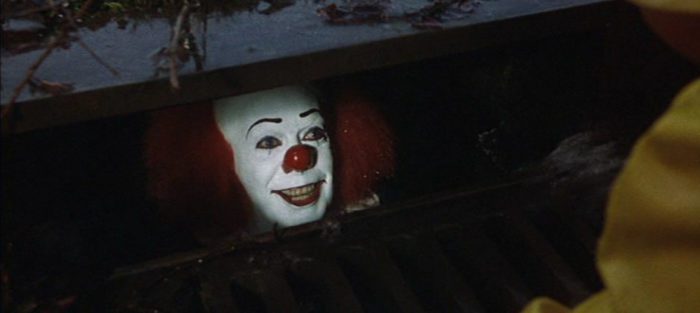
So, how common is coulrophobia? According to Healthline, 7.8 percent of Americans have coulrophobia. McRobbie mentions a BBC report on a 2008 University of Sheffield survey in which 250 children, ages 4-16, were shown images of clowns. Most of the children expressed dislike or fear of clowns.
McRobbie writes: “The BBC’s report on the study featured a child psychologist who broadly declared, ‘Very few children like clowns. They are unfamiliar and come from a different era. They don’t look funny, they just look odd.'”
Creepy Clown Craze
In 2016, strange reports started popping up in the news. It started in the United States and spread worldwide. People dressed in clown costumes were reported engaging in odd and sometimes violent behavior.
It started on August 30, 2016, in Greenville, South Carolina when a group of about 30 children reported that some clowns tried luring them into the woods with candy and money. This happened around an apartment complex. There was an abandoned house in a wooded area surrounding the complex which was the suspected hiding place for the clowns. When police investigated, they never found any clowns or any evidence that anyone had been in the abandoned house.
Shortly after, a clown called Gags was reported walking the streets in Green Bay, Wisconsin. This clown was photographed walking around with a bunch of balloons.
ABC News provides a timeline of creepy clown sightings. These are some of the highlights.
On September 14, 2016, two children in Georgia, Cameron Frails, age 12, and his little brother were reportedly chased by two clowns while walking to a school bus stop at 6 AM. Another child, a neighbor, Hannah Rice, said that she also saw the clowns who were described as adult males in black costumes with red wigs.
A 12-year-old girl in Pottsville, Pennsylvania, Brianne Hawke, said that a clown chased her through a park on September 21, 2016. She said that a boy came into the park screaming about clowns “eating something in the woods.”
“A clown started chasing us up here and turned around and went back to the woods,” she said. She went on to say that the clowns swore at the children and threw sticks at them.
On September 24, 2016, the recent clown reports caused the Tennessee Highway Patrol to issue a warning for parents to be on the lookout for predators in clown costumes trying to lure children into the woods.
On September 26, the FBI got involved when a threat with a clown image was posted on social media. Many absences in Arizona schools were attributed to the threat. Apparently, the post frightened the community to the point where half of the 3,000 students at Marydale High School failed to show up for class out of fear for their safety.
The FBI’s investigation led them to three juveniles. More schools in Ohio and Tennessee were targeted later that week.
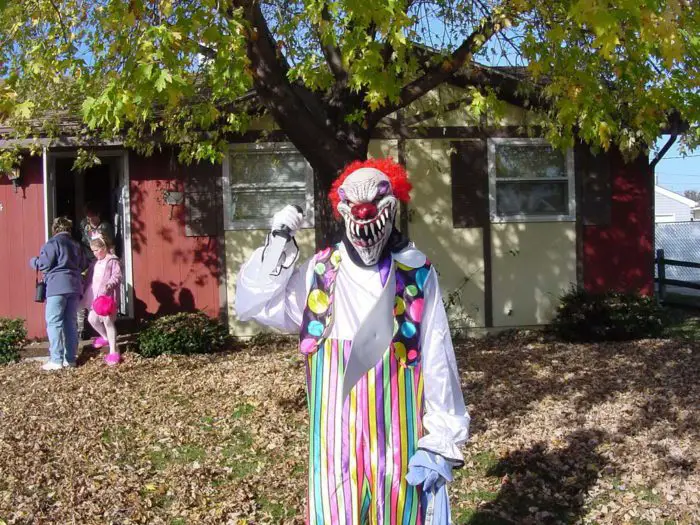
Many more reports followed in North Carolina, Colorado, Washington, California, and Boston. Police received reports of clowns chasing people, attacking with knives and baseball bats, and simply staring into windows.
Videos of creepy clown attacks popped up on YouTube. If you take a look at a compilation, many of these alleged attacks are on people in cars driving at night. Clowns charge at vehicles from the darkness, carrying sticks or bats, and sometimes they jump on the cars. Of course, most of these could be hoaxes.
There were also robberies committed by perpetrators wearing clown masks in Arizona and Detroit, Michigan. Residents in many of these areas where clown sightings and attacks were reported formed vigilante groups causing police to crack down on the citizen mobs ready to shoot clowns on site. Students assembled in an angry mob at Penn State University in October after clowns were allegedly spotted on campus.
The Craze Spreads & Professional Clowns Suffer
The clown craze didn’t end here but spread around the world—to Canada, Britain, Australia, New Zealand, and beyond. Many clown-related businesses were affected including circuses. Costume shops removed clown costumes from their shelves. McDonald’s even took their longtime mascot, Ronald McDonald out of their ads.
Fearing for their safety, many clowns canceled events and appearances. Professional clown, Justin Brodie, told CBS News This Morning that people mooned, flipped him off, threw garbage at his car, and yelled profanity at him during performances. Anti-clown sentiment reached a point where Randy Christensen, head of the World Clown Association, issued the following statement, quoted in the YouTube video, “The Bizarre 2016 Clown Invasion,” “We’re full of people that love children, bring smiles and want to make people laugh and bring comic relief. The people dressing up are trying to scare people, no professional clown would ever take part in anything like that.”
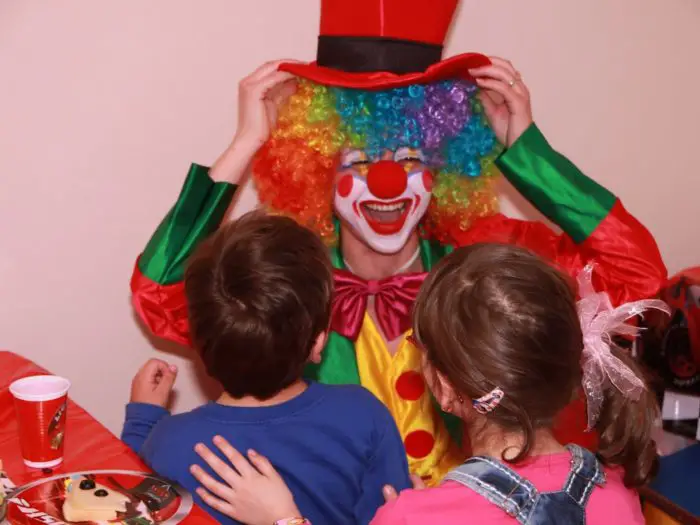
Of course, none of this bizarre, and sometimes violent activity, was ever traced to professional clowns. In instances where it could be traced to anyone at all, it was a person dressed as a clown but who didn’t work professionally as a clown. However, in many instances, no clowns were found at all. In fact, some people were arrested for filing false reports. Four people were arrested for an alleged elaborate hoax after posting a photo of themselves wearing clown masks on social media that went viral. A Reading, Ohio woman was arrested for filing a false report of a clown attack. Then there’s the original story of clowns living in the woods in Greenville, South Carolina. A police investigation never turned up any clowns.
According to a video report by Vox, “America’s Creepy Clown Craze Explained,” the clown craze of 2016 wasn’t the first. In 1981, police in Boston received over 20 calls from children who reported seeing mysterious clowns. Police did locate a clown who said that he had only been making his rounds to department stores as part of his job. In Kansas City, that same year, police received 100 reports about a “demon clown with a knife.” A parochial school sent home a note to parents about the “killer clown.” A police investigation found no killer clown.
In England in 2013, the Northampton Clown was reportedly terrorizing a small town. Someone even created a page on Facebook to track the clown’s whereabouts. The activity—including the Facebook page—was eventually traced to three young filmmakers. The purpose behind the Northampton Clown is unclear.
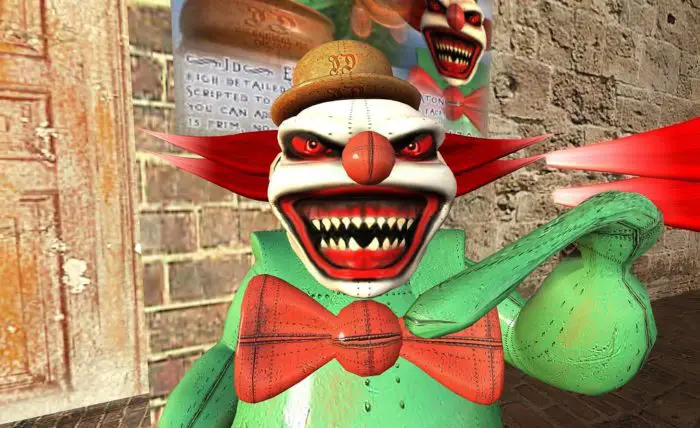
Clowns have existed in one form or another going back to ancient Egypt, Greece, and Rome. Joseph Grimaldi is credited for the clown’s eccentric appearance. Charles Dickens is credited with creating the now dark and tragic clown figure in his book, The Pickwick Papers, inspired by Grimaldi. The rise in popularity of the circus during the 19th century introduced the clown as a lighthearted figure whose purpose was comic relief. Television made the clown a popular children’s entertainer.
Currently, the clown has built up a dark and frightening reputation. Many sources point to serial killer John Wayne Gacy, who was arrested in 1978, as a possible origin for the rise of the clown’s association with evil. Gacy dressed as a clown called Pogo and entertained at children’s birthday parties.
The sinister clown had become a trope from Batman’s Joker and Harley Quinn to Pennywise to the Saw franchise to Rob Zombie’s Captain Spaulding. Is it a sign of the times? Numerous true crime channels on television and social media provide a lot of information on the sinister things that go on in seemingly quiet communities. All of this information sheds light on the dark side of human nature. The clown is the perfect embodiment of the benevolent smiling face that is a literal mask. Many psychologists point out that the clown’s disguise is what causes suspicion, paranoia, and fear. The observer is left to wonder who is beneath the mask?
Works Cited:
[1] Radford, Benjamin. Bad clowns. University of New Mexico Press: 2016. p.5


